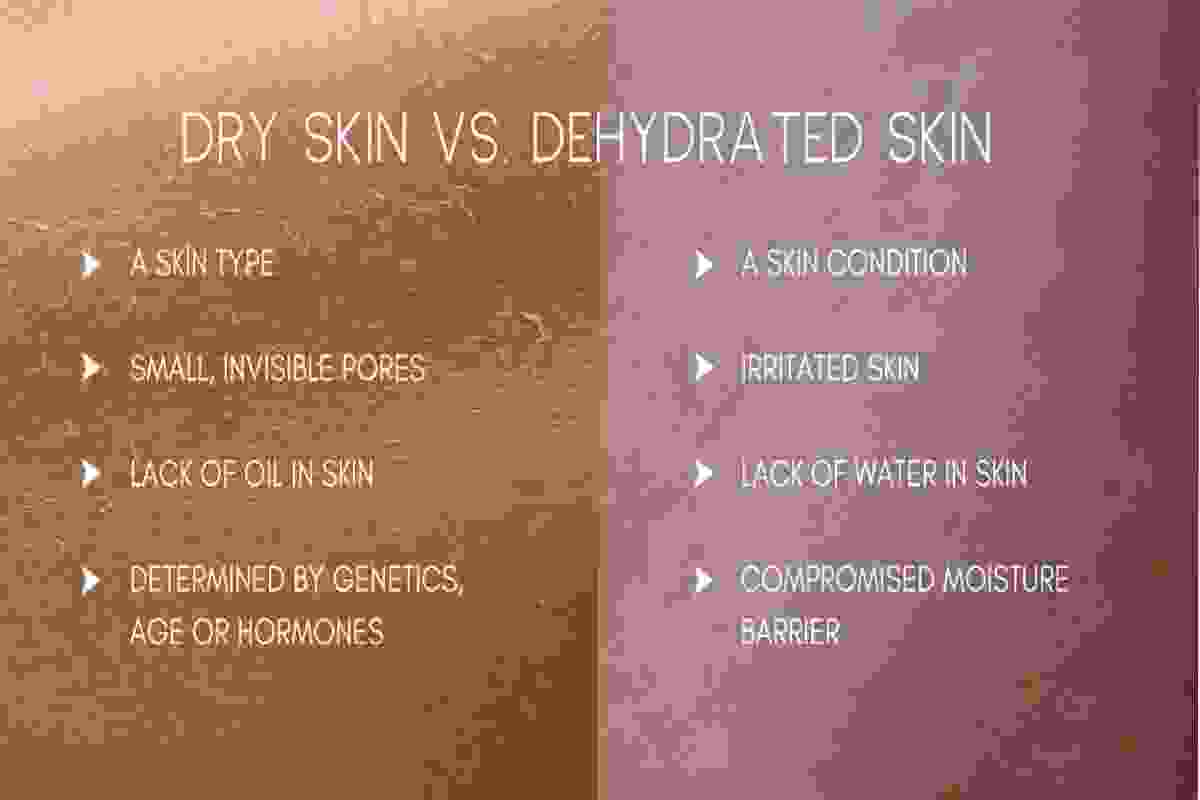Maintaining healthy skin requires a nuanced understanding of its various conditions. Two commonly misunderstood issues are dry skin and dehydrated skin. While they may seem similar, they have distinct causes, symptoms, and treatments. In this article, we’ll explore these differences, guide you on how to identify each condition, and offer effective treatment solutions.
Table of Contents
What is Dry Skin?
Dry skin, medically known as xerosis, is a type of skin condition characterized by a lack of oil or sebum. This can be due to genetics, age, climate, or lifestyle factors. Dry skin often feels rough and flaky, and it may appear dull and uneven.
Symptoms of Dry Skin:
- Rough texture
- Flaking and scaling
- Itchiness
- Cracks and fine lines
- Redness or irritation
Causes of Dry Skin:
- Environmental factors: cold weather, low humidity
- Hot showers or baths
- Harsh soaps and detergents
- Aging, which reduces oil production
- Certain medical conditions like eczema or psoriasis
What is Dehydrated Skin?
Dehydrated skin, on the other hand, is a skin condition where the skin lacks water. This can happen to anyone, regardless of skin type, and is usually temporary. Unlike dry skin, dehydrated skin can be oily, normal, or combination skin that is simply lacking moisture.
Symptoms of Dehydrated Skin:
- Dullness
- Dark circles under the eyes
- Itchiness
- Increased sensitivity
- Fine lines and wrinkles that are more noticeable
- A feeling of tightness
Causes of Dehydrated Skin:
- Insufficient water intake
- Excessive consumption of caffeinated or alcoholic beverages
- Environmental factors: sun exposure, wind
- Use of incorrect skincare products
- Air conditioning or heating
How to Identify the Difference
One of the main differences between dry and dehydrated skin is the root cause. Dry skin is a lack of oil, while dehydrated skin is a lack of water. Here are some tips to help you determine which condition you might be dealing with:
- Blotting Paper Test: Use a blotting paper on your skin. If it picks up little to no oil but your skin feels tight, you likely have dry skin. If it picks up oil but your skin still feels tight and uncomfortable, it’s probably dehydrated.
- Pinch Test: Gently pinch the skin on the back of your hand. If it wrinkles with gentle pressure, it’s dehydrated. If it remains smooth, it’s likely dry.
- Observation: Pay attention to how your skin reacts after cleansing. If it immediately feels tight and uncomfortable, it could be dehydrated. If it looks flaky and feels rough, it’s likely dry.
How to Treat Dry Skin
- Moisturize Regularly: Use a rich, oil-based moisturizer that helps to replenish the skin’s natural oils.
- Avoid Hot Showers: Use lukewarm water instead to avoid stripping your skin of natural oils.
- Gentle Cleansing: Choose mild, fragrance-free soaps and cleansers.
- Hydrate from Within: Drink plenty of water to support overall skin health.
- Humidify Your Space: Use a humidifier to add moisture to the air in your home, especially in the winter.
How to Treat Dehydrated Skin
- Hydrate: Drink plenty of water throughout the day to keep your skin hydrated from within.
- Use Hydrating Products: Look for products containing hyaluronic acid, glycerin, and aloe vera.
- Avoid Caffeine and Alcohol: Limit intake of these as they can dehydrate your skin.
- Gentle Exfoliation: Regularly exfoliate to remove dead skin cells and allow hydrating products to penetrate better.
- Use a Humidifier: This helps maintain moisture levels in the air, especially in dry climates or heated environments.
Conclusion
Both dry and dehydrated skin can be effectively managed with the right approach and products. Recognizing the difference is the first step towards better skin health. For a comprehensive range of skincare solutions designed to address both dry and dehydrated skin, check out the offerings at SkinGym. Their tailored products can help restore your skin’s natural balance, leaving it healthy, hydrated, and glowing.
By understanding your skin’s needs and choosing appropriate treatments, you can achieve and maintain a radiant complexion.

